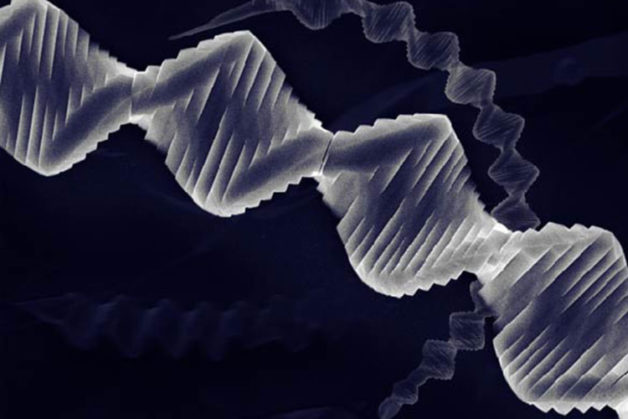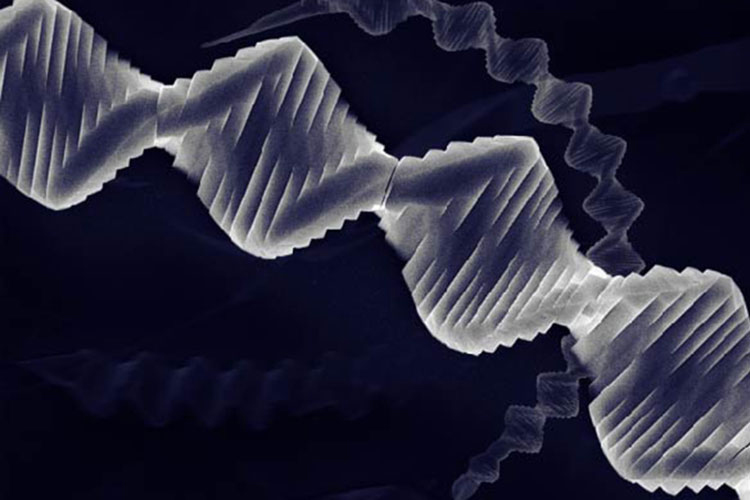
Credit: UC Berkeley image by Yin Liu
With a simple twist of the fingers, one can create a beautiful spiral from a deck of cards. In the same way, scientists at Berkeley Lab and UC Berkeley have created new inorganic crystals made of stacks of atomically thin sheets that unexpectedly spiral like a nanoscale card deck.
Their surprising structures, reported in a new study in the journal Nature, may yield unique optical, electronic and thermal properties, including superconductivity, the researchers say.
These helical crystals are made of stacked layers of germanium sulfide, a semiconductor material that, like graphene, readily forms sheets that are only a few atoms thick. Such “nanosheets” are usually referred to as “2D materials.”
X-ray analyses for the study were performed at Berkeley Lab’s Advanced Light Source, and the crystal’s twist angles were measured at the Molecular Foundry.
“No one expected 2D materials to grow in such a way. It’s like a surprise gift,” said Jie Yao, a faculty scientist in Berkeley Lab’s Materials Sciences Division and assistant professor of materials science and engineering at UC Berkeley. “We believe that it may bring great opportunities for materials research.”
Read the original UC Berkeley news release by Kara Manke.
